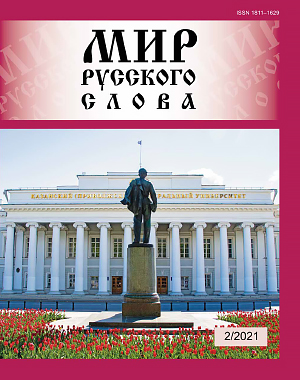Interactivity as a Property of Digital Educational Text and its Didactic Potential
DOI:
https://doi.org/10.24412/1811-1629-2021-2-80-87Abstract
The article considers interactivity as a feature of the digital educational text. Digital text is a new type of text that, in an educational context, reveals a number of advantages correlated with enhancing student motivation, as well as their involvement in the educational process. At the same time, a notable number of interactive elements in the digital text can negatively aff ect its perception. The purpose of the article is to investigate the infl uence of interactivity as phenomenon-generating properties of digital text on the process and quality of online reading. The work used theoretical and practical research methods. Studies on the digital reading process were analyzed and summarized, which allowed the primary hypotheses to be formulated. In order to identify the awareness of the digital educational text reader and to determine the parameters of the text that aff ect its perception, the survey was conducted; the respondents were 32 master’s program students of the Pushkin State Russian Language Institute. The research has shown that the students are conscious of the peculiarities of digital educational text. Their assessment of the impact of interactivity on the process and results of reading coincides with the data obtained during previous experiments: for example, students note that interactivity has a positive eff ect on motivation and interest while reading, and the presence of the hyperlinks leading to thematic blocks of text makes it easier to navigate through the text. As part of subsequent research, the interrelation between the interactive elements in a digital text and its understanding will be analyzed, since the study of the methodological potential of digital interactive texts is an important and promising research task.
Keywords:
interactivity, digital text, digital reading, digital educational content
Downloads
References
Словари и справочники
References
Dictionaries and reference books
Downloads
Published
How to Cite
Issue
Section
License
Articles of "The World of Russian Word" are open access distributed under the terms of the License Agreement with Saint Petersburg State University, which permits to the authors unrestricted distribution and self-archiving free of charge.




